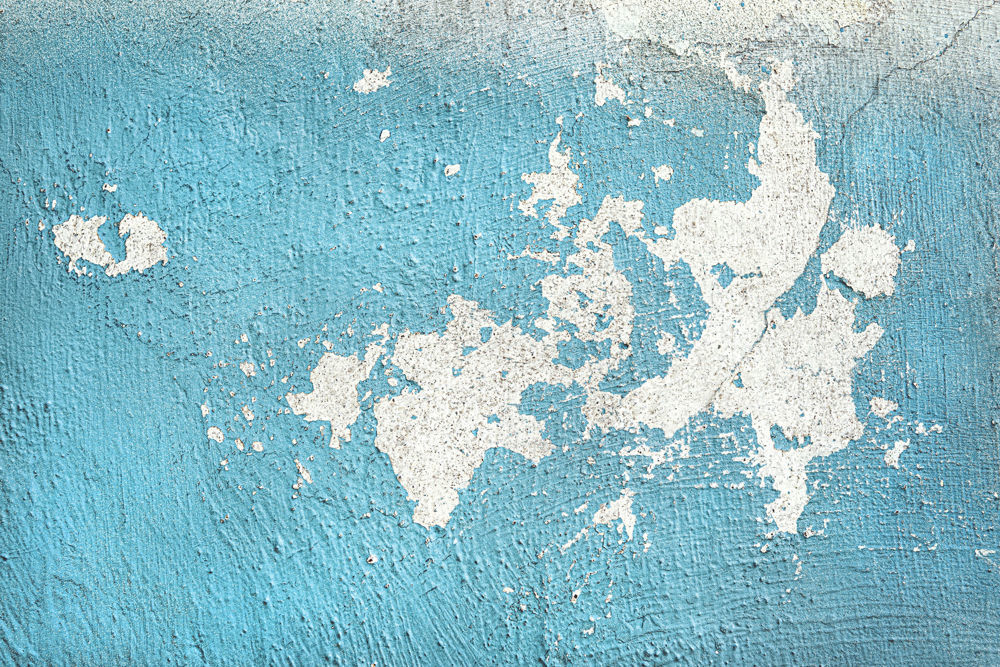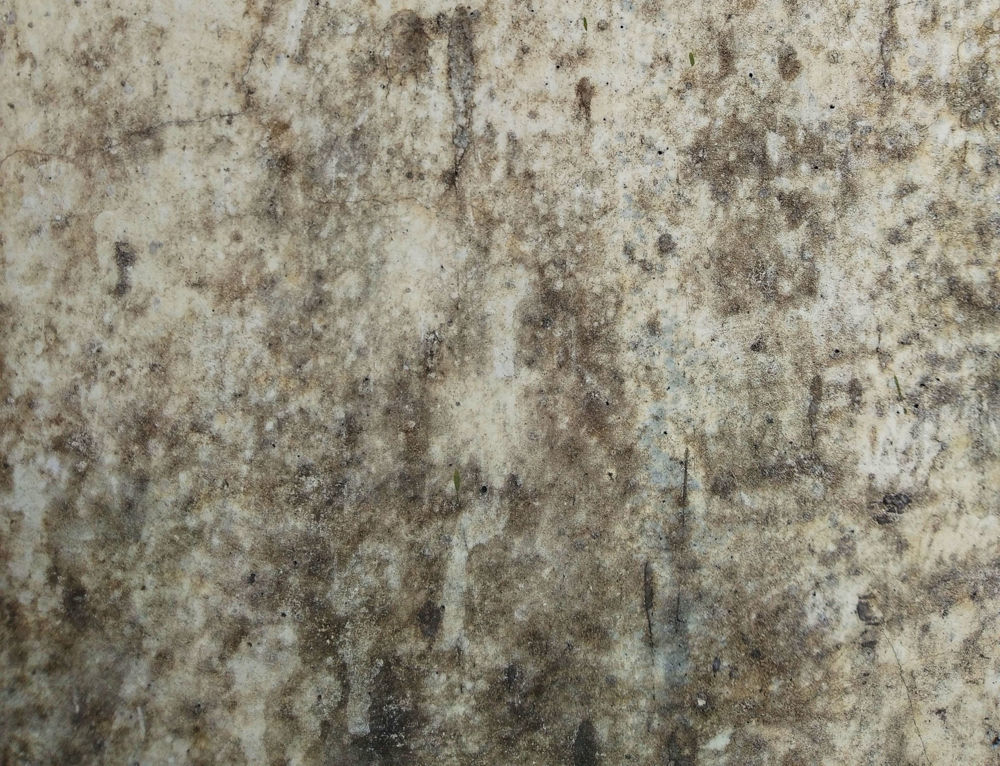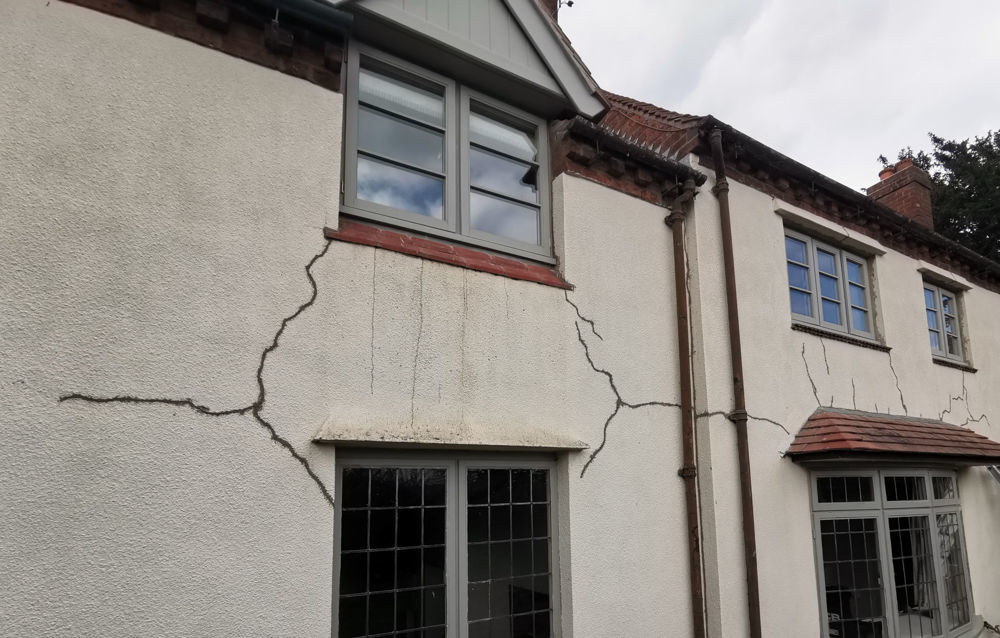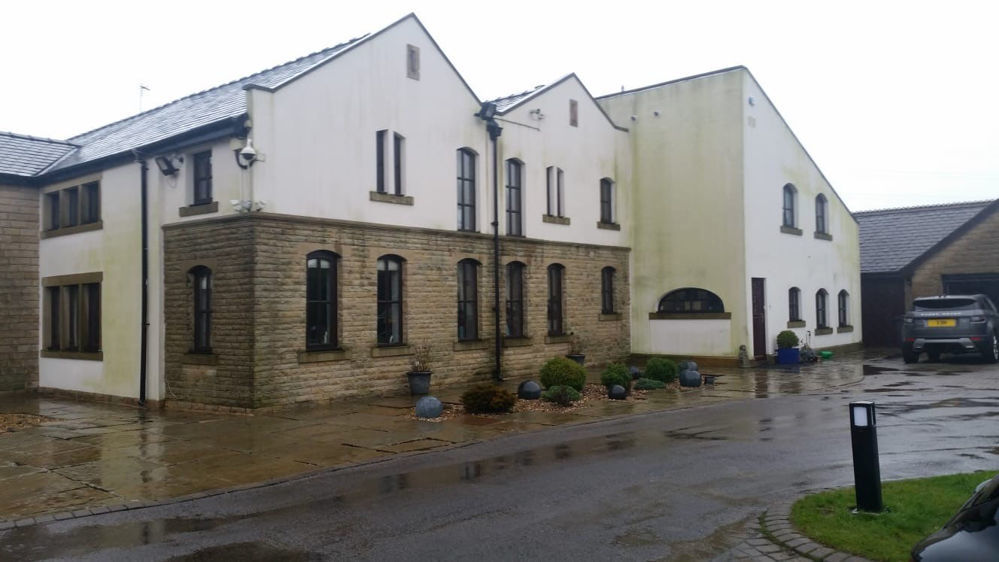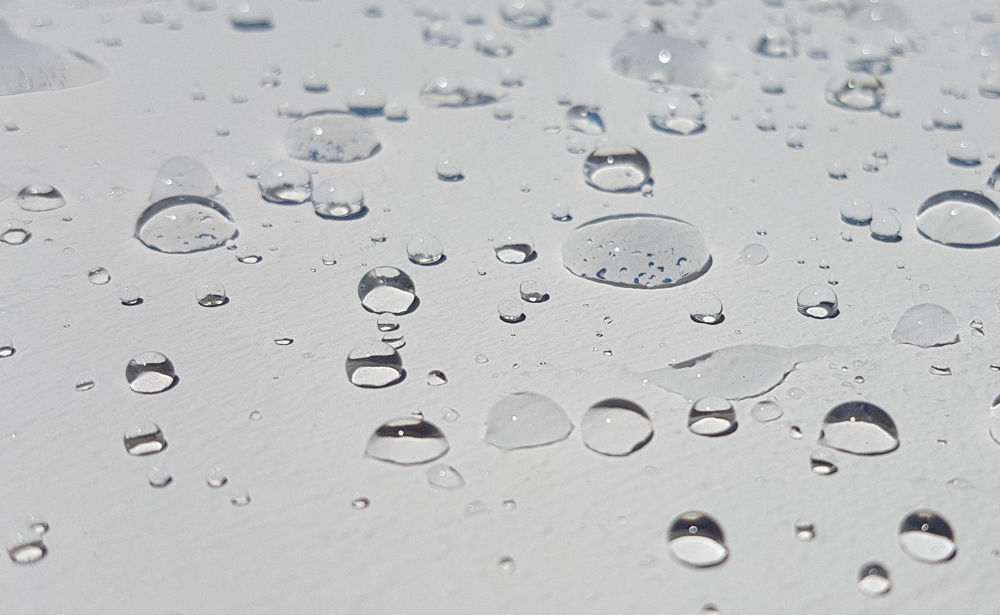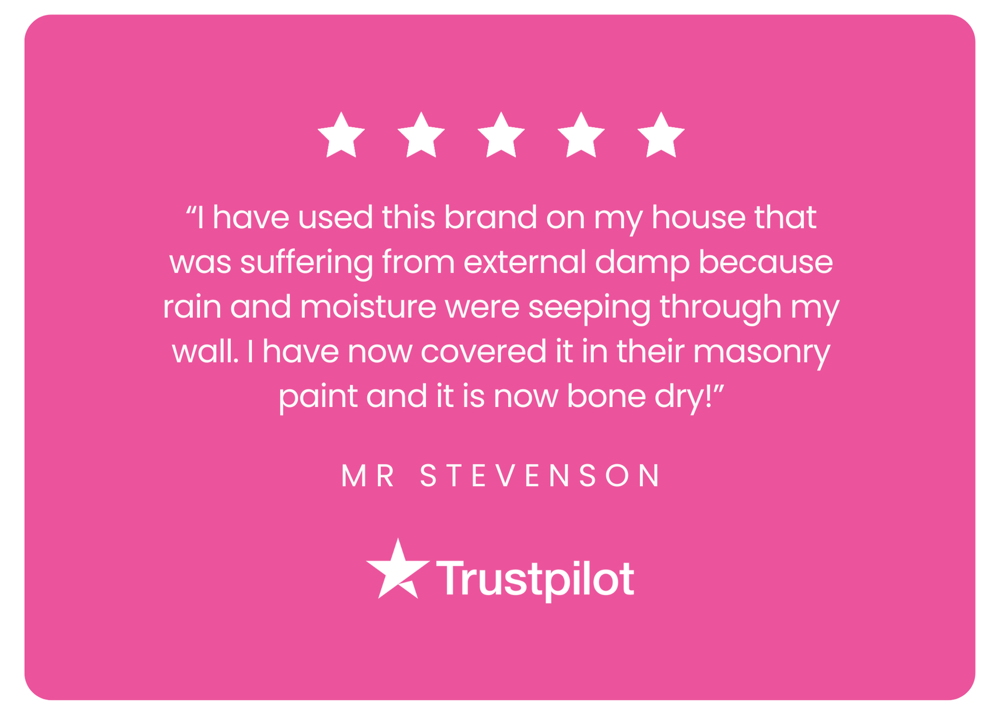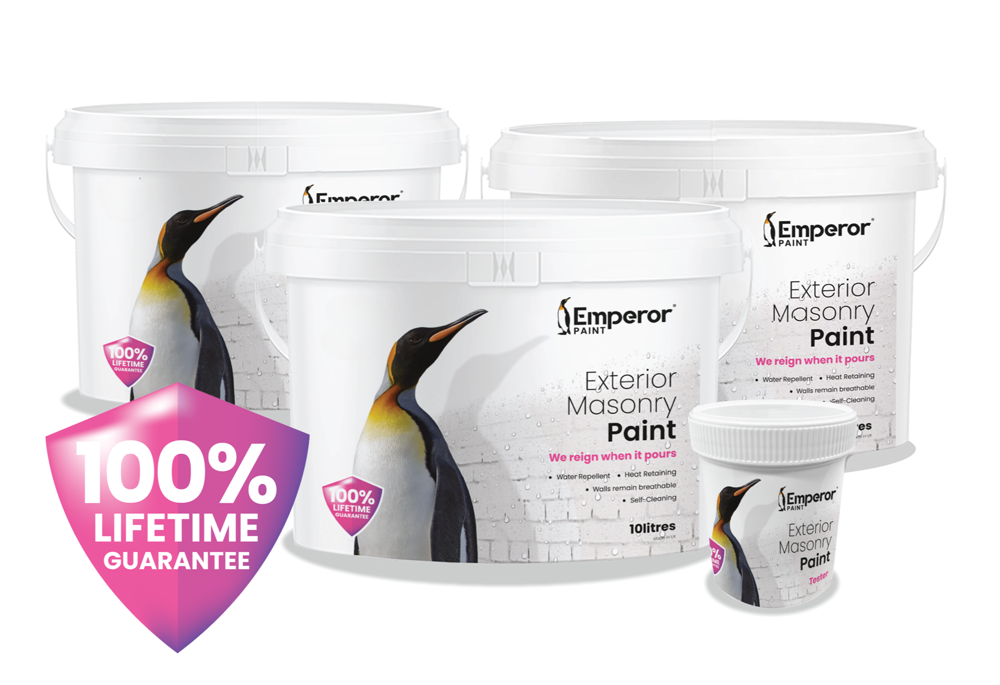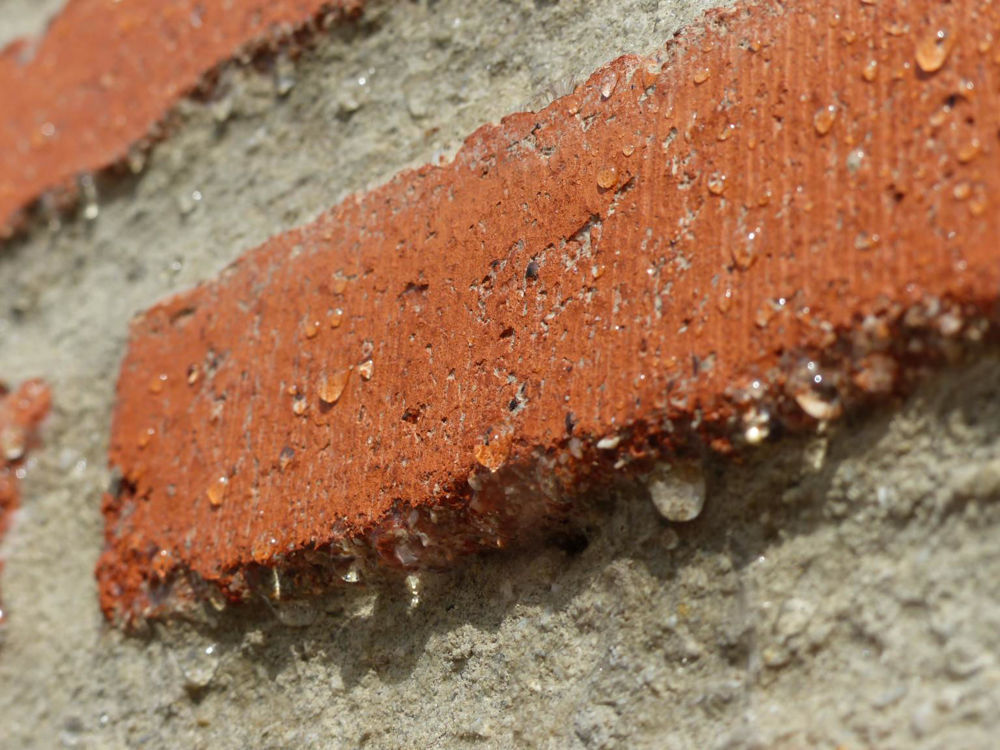Everything You Need To Know About Waterproofing Paint
Waterproofing and paint are two things that are often discussed hand-in-hand, however there is a lot of misleading information which can complicate things. In this guide we are going to cover everything you need to know about exterior paints and how waterproofing works, so you can find the most suitable paint for you.
What Is Waterproofing Paint?
When it comes to exterior paints, no country is more demanding than here in the UK. With high levels of moisture and big temperature changes across the seasons, our homes have to withstand their fair share of punishment. With this in mind, it will come as no surprise to you that the biggest cause of paint failure in this country is moisture.
Damp and water damage is something that impacts millions of properties, but yet it is not always front and centre of the conversation when it comes to exterior decorating.
So, let’s start with what exactly we mean when we say waterproofing paint. Waterproofing paint refers to a paint that is designed to prevent the movement of moisture from the external environment into a substrate. While some internal paints can be associated with waterproofing and other damp relating problems, when we talk about waterproofing paints we are discussing exterior paints.
You may be thinking, surely all exterior paints are waterproof, especially masonry paints that are designed for use on exterior walls? Well, while you may assume this is the case, waterproofing properties and masonry paints are a little bit more complicated than that. All masonry paints are designed with varying levels of weather protection. This is down to the type of formulation, the quality of resins and the overall level of technology used.
This leads to quite a bit of marketing jargon when it comes to the weather protection a masonry paint offers, with terms such as ‘weatherproof’, ‘weather-resistant’ or even ‘waterproof’ being used when many masonry paints in reality are not technically speaking completely waterproof. To be waterproof and to be considered a waterproofing paint, a paint must be water repellent. If a paint does not repel water, eventually the water will begin to soak into the paint itself and eventually into the exterior wall.
What Problems Do Non-Waterproofing Paints Cause?
Moisture entering an exterior wall can have a number of impacts not only for the performance of the property but the appearance.
PAINT FAILURE
As we have already mentioned, moisture is the biggest cause of exterior paint failure in the UK. This is because when the moisture is absorbed it not only passes through into the wall beneath but it also gathers underneath the film of paint. If the paint has low breathability it can become trapped, as it has nowhere to escape. As this water begins to build, eventually it reaches bursting point, causing the paint to begin to bubble, peel and flake.
This is more often than not what causes masonry paint to fail, as the moisture has no choice but to burst through the paint. If you wondering about breathability and its importance? Don’t worry, we will be covering this in more detail shortly.
DAMP
We’re all familiar with damp problems in the UK, but homeowners are generally less aware of what exactly causes the damp in the first place. There are three broad forms of damp; condensation, rising damp and penetrating damp.
As a guide, condensation is an internal form of damp caused by high-levels of moisture, often caused in rooms such as kitchens or bathrooms. Rising damp is an external form of moisture which is caused by moisture soaking up through the bottom level of bricks in a property. This is a rare form of damp as most properties across the UK now have DPC’s which prevent this occurring. Lastly, penetrating damp is caused when water from rainfall or a leak soaks into the external walls of a property.
So how does damp relate to non-waterproofing paints? Well, just like a bare, unpainted masonry, a wall painted with a non-waterproof masonry paint will begin to uptake moisture over-time, allowing penetrating damp to develop. This penetrating damp can lead to wet patches appearing both on external and internal walls, crumbling plaster and peeling wallpaper. This is particularly an issue for properties with a solid wall construction, but can also occur in properties with a cavity wall construction if there is poorly fitted cavity wall insulation.
STRUCTURAL DAMAGE
While a standard non-waterproofing paint does not directly cause structural damage on its own, despite what you may think it is not helping to prevent it either. When water enters an external wall it can undergo what is known as a ‘freeze-thaw cycle’. This is when water freezes while in the wall, causing it to expand and thus cause significant movement within the substrate. This movement can cause cracks to open up, which allows more water to enter the wall and creates a cycle of damage to the wall.
By not preventing water entering the external wall, standard masonry paints can leave surfaces at risk from this damage, which is often why render and other mineral surfaces can begin to crack and delaminate.
ORGANIC GROWTH
Like all fungus, organic growth such as algae, lichens and mildew all thrive in high-moisture conditions. As non-waterproofing paints allow the surface to become saturated, this organic growth is provided with the ideal conditions to bloom and ultimately thrive, leaving exterior walls looking less than their best.
While this can be cleaned off and removed, it will continue to develop if the moisture it requires to grow is present. Certain types of render suffer from what appears to be orange staining, which can often be confused with organic growth. This is caused by resins within the render bleeding out, causing significant stains that can’t be easily removed. While not organic growth, this is again caused by the movement of moisture.
What Is Breathability & How Does It Relate?
So, we’ve established what problems are caused by standard masonry paints that aren’t fully waterproof, but where does breathability come in? Breathability refers to how much water vapour can freely pass through a surface. The higher the breathability, the quicker water vapour can pass through the pores and the dryer the surface will be.
Breathability can be measured using an SD value, with anything below 0.5 being considered breathable. As you can imagine, this is crucially important for paints, especially having already discussed the problems that moisture can cause. If a paint has low breathability, it can cause any moisture that has either entered the surface from the outside or moisture from inside the surface to become trapped. This is what causes moisture to gradually build-up along with water ingress, causing significant problems long-term.
Just like the weather protection masonry paints offer, the breathability of these paints is often confused due to marketing jargon. While a paint may be referred to as ‘breathable’, this can often mean it has some level of breathability, even though this level is low. This is why it is crucial for the SD value of a masonry paint to be considered.
While some masonry paints are highly breathable, such as limewash, these often do not have the weather protection required to prevent the issues caused by water ingress. That is why weather protection and high breathability are equally as important for protecting exterior walls from weathering.
What Paint Is Waterproof & Highly Breathable?
All of the problems that moisture causes and the growing confusion caused by misleading terms led us to develop our innovative formulation. We had two objectives; to produce a paint that significantly reduced water absorption but also that did not impact the breathability of exterior walls. This resulted in our super hydrophobic nano-technology which lines the pores of exterior walls without sealing these pores, reducing water absorption but still maintaining an open-pore structure and therefore offering high breathability.
HOW DOES IT WORK?
The concept is simple, our nano-technology comprises of millions of microscopic pyramids that mean water beads cannot sit on the surface, causing them to simply roll away. This creates what is known as a ‘super hydrophobic’ surface, as water is repelled from it before it can soak through. These pyramids still have small gaps however, that are small enough for water vapour to pass through. This is all invisible to the naked eye, which is why we call it our nano-technology.
That is the technical bit, but in short, our Emperor Masonry Paint reduces water absorption by 96% while also having an SD value of 0.03. This means it offers complete weather protection, while having a breathability level similar to limewash.
WHAT ARE THE BENEFITS?
The result of this is that the problems that non-waterproofing paints cause don’t occur with Emperor Masonry Paint.
In terms of its appearance, it completely resists peeling, flaking or blistering due to moisture not becoming trapped underneath the paint film. The paint also chemically bonds to the wall, ensuring an extremely strong adhesion that cannot be broken.
Due to this, the paint has been independently shown in UKAS accredited testing to withstand harsh weathering for a minimum of 25 years without showing any signs of change in appearance or performance. In fact, we’re so confident it will exceed this 25 year period that we offer a lifetime guarantee.
While on the subject of the appearance of the paint, Emperor Masonry Paint also discourages the growth of mildew, algae and other fungus. This is down to the fact it prevents the wall from becoming saturated, which removes the conditions required for this to grow. It also creates what is known as a ‘self-cleaning’ surface on exterior walls. While that may sound too good to be true, the concept is simple. When water rolls off the super hydrophobic surface, it gathers any dirt on the wall, meaning the wall is washed which each rainfall. This reduces the discolouration on the wall and prevents the need for consistent maintenance to keep the house looking its best.
When it comes to the performance of the exterior wall, that is where our nano-technology really begins to shine. Firstly, by reducing water ingress, Emperor Masonry Paint protects exterior walls from cracking, as well as helping to ensure render does not delaminate from the masonry beneath. Crucially, the combination of weather protection and high breathability helps to prevent penetrating damp, keeping not only external walls dry and damp-free, but also the internal walls.
THERE IS MORE…
Potentially the most significant performance benefit of Emperor Masonry Paint however is something you may not expect. Wet walls transfer heat much quicker than dry walls. Try to imagine how wet clothes cause us to become cold quickly, well the same occurs with the exterior walls of our homes. To be exact, damp content of 5% can lower the insulating performance of a surface by 50%. By keeping exterior walls dry, Emperor Masonry Paint has been shown in independent testing to keep walls up to 6°C warmer on average compared to untreated exterior walls.
What About Bare Masonry?
Leaving bare natural masonry exposed to the elements can subject it to all of the same problems that a non-waterproofing paint can create, if not to a higher extent.
That’s why when we developed our nano-technology we created a clear version that is specifically designed for bare, natural mineral surfaces including brick, stone and concrete. Emperor Masonry Creme offers completely invisible protection to masonry, which unlike a sealer does not create a non-breathable film on the surface. Instead, it absorbs deep into the masonry and chemically bonds, which provides the wall with super hydrophobic properties.
Frequently Asked Questions
Q. CAN I APPLY EMPEROR MASONRY PAINT TO PREVIOUSLY PAINTED SURFACES?
Yes, you can apply Emperor Masonry Paint to both previously painted surfaces and bare brick, stone or concrete. If you are applying it to a previously painted surface, make sure the paint is sound and not peeling. If you are planning to apply Emperor Masonry Paint to a bare masonry wall, ensure you apply one-coat of Emperor Exterior Primer first in order to prepare the wall ready to paint. You do not need to apply primer if the wall is already painted.
Q. HOW DO I APPLY EMPEROR MASONRY PAINT?
It is a simple process when it comes to applying Emperor Masonry Paint. The trick is to ensure the surface is properly prepared before you start painting, as this allows it to perform at its best. Ensure you remove any peeling paint, clean the wall down and make any repairs you may need to make.
The next step is to apply primer if you are painting a bare surface. Apply one-coat of Emperor Exterior Primer using a brush or long-pile roller, at a coverage of 5-8m2 per litre, depending on how porous the surface is. Allow 3-5 hours at 20°C for the primer to fully dry. At lower temperatures the drying time will be extended.
You can then apply the paint to the wall. A combination of masonry brush and long-pile roller is the best way to apply the paint. On smooth and semi-smooth surface you can expect a coverage of 5-6m2, while roughcast, pebbledash and other textured surfaces will reduce the coverage to 3m2 per litre. Allow 6-8 at 20°C before applying your second coat. Once again, lower temperatures will extend this by 1-2 hours, so make sure you give the first coat plenty of time to dry.
Q. HOW LONG DOES IT TAKE TO START WORKING?
This depends on the environmental conditions at the time of application, but generally Emperor Masonry Paint will be dry after approximately 2 hours and should start to show its full beading effect after 24 hours, although it can take up to 10 days in some cases. Don’t worry, after the 2 hours initial drying time it will be showerproof and will prevent water ingress.
We hope we have answered any questions you may have had regarding waterproofing paint, what it means and what to look out for. If you have any other questions our team of experts are on hand to assist you no matter your problem. Contact them today by emailing [email protected] or calling 01254 936121. Alternatively, shop Emperor Masonry Paint today and get free delivery on all orders.



